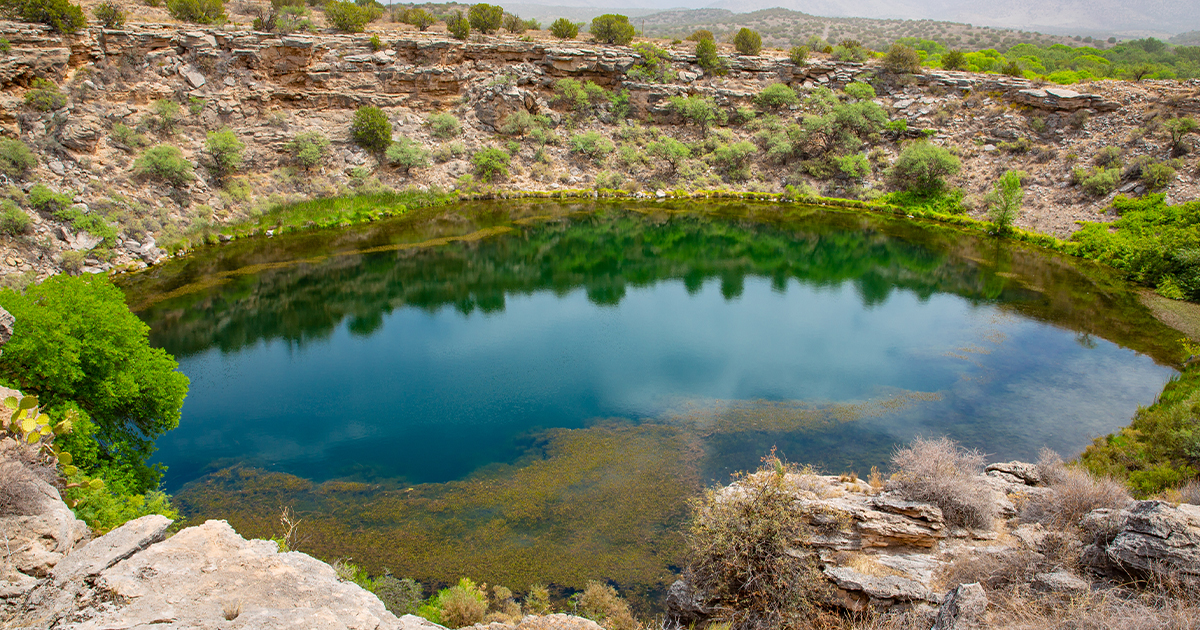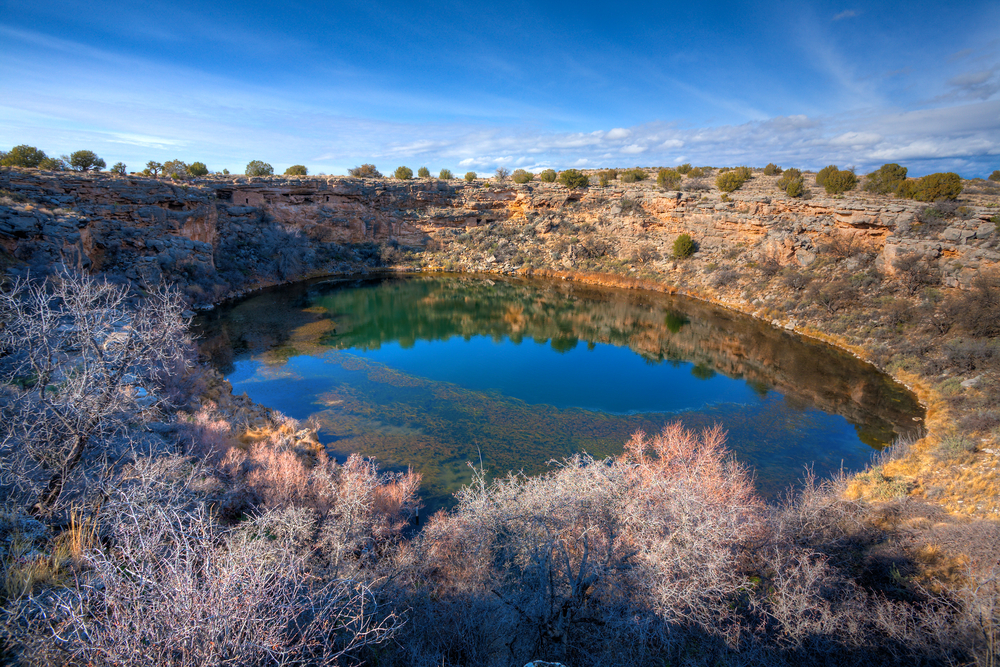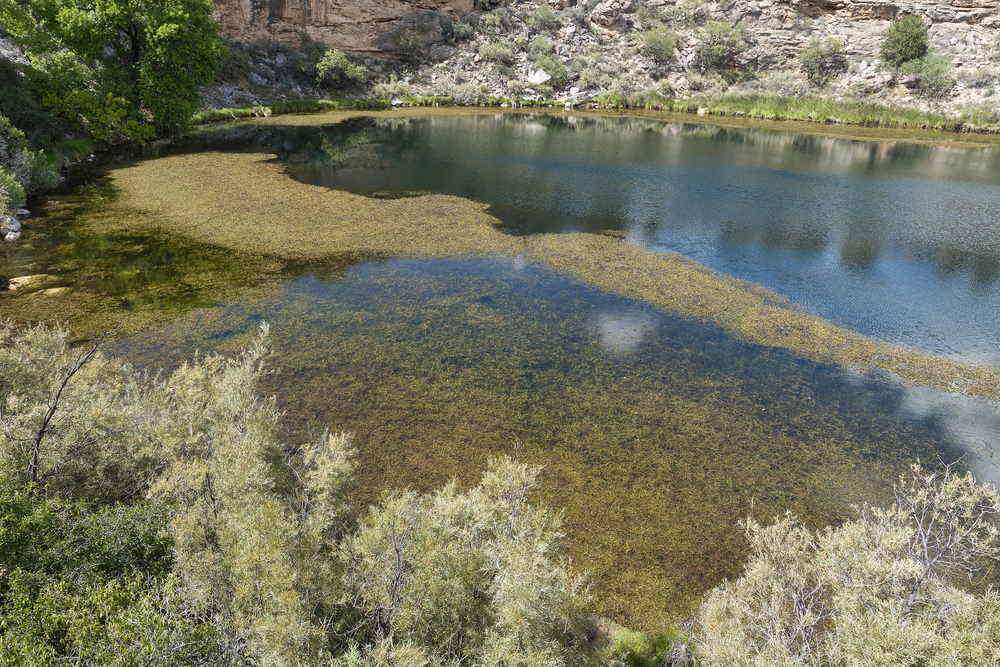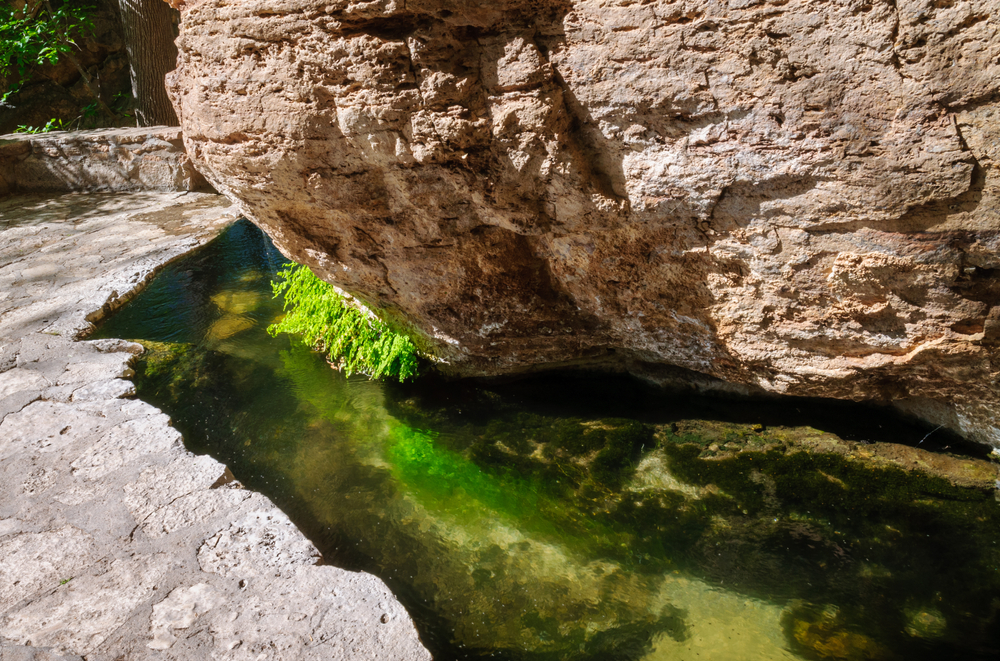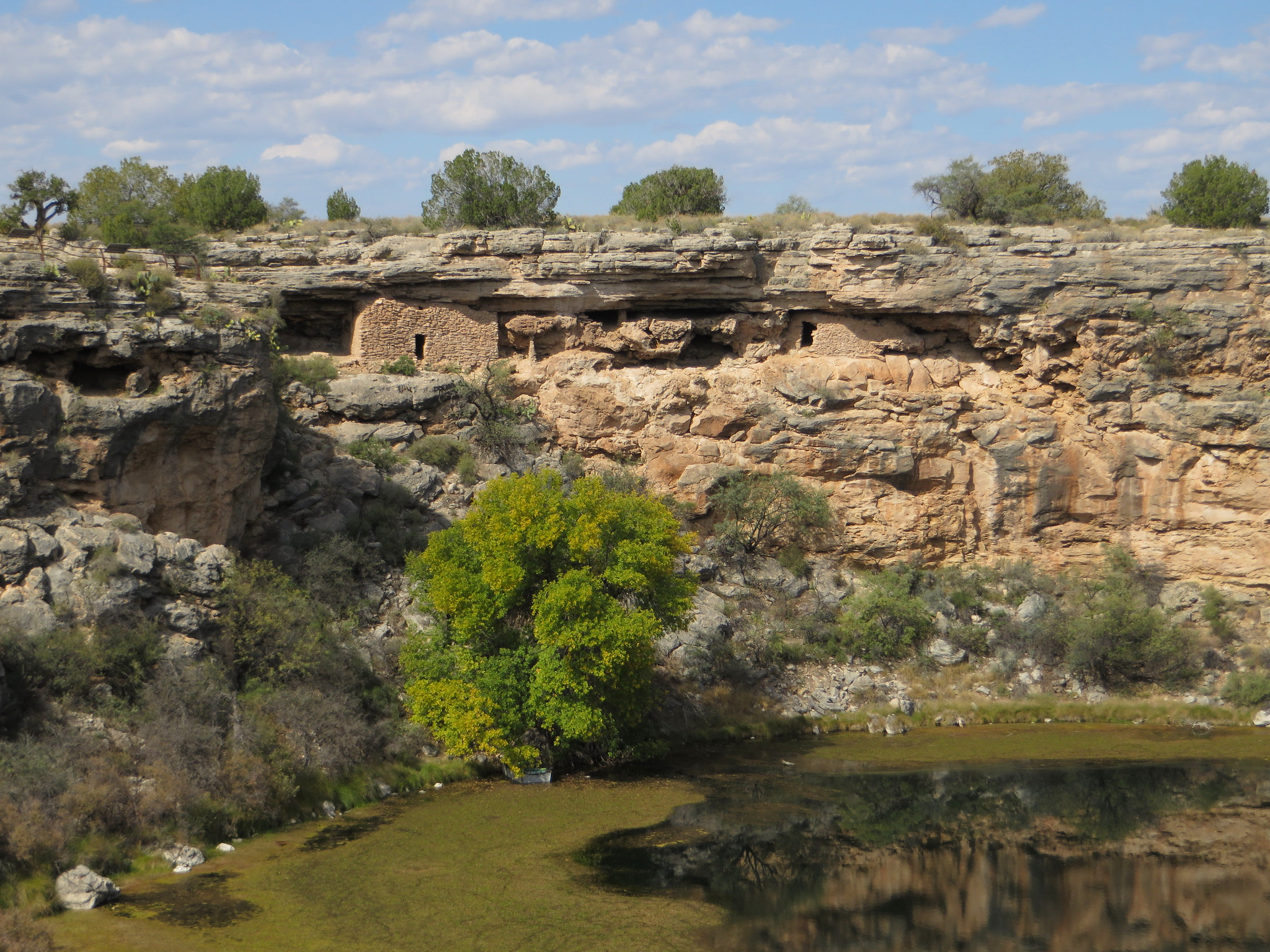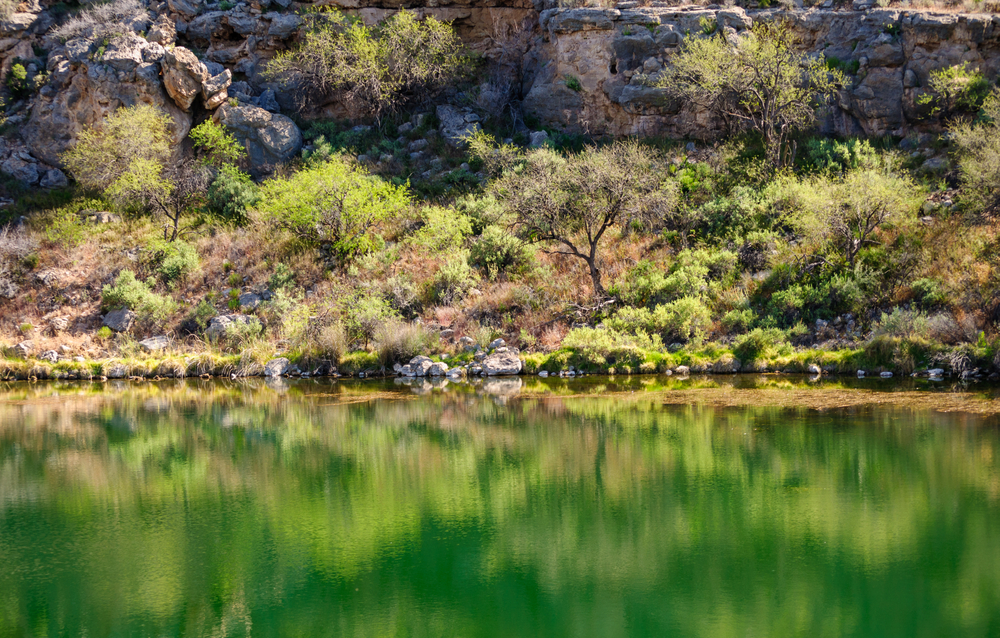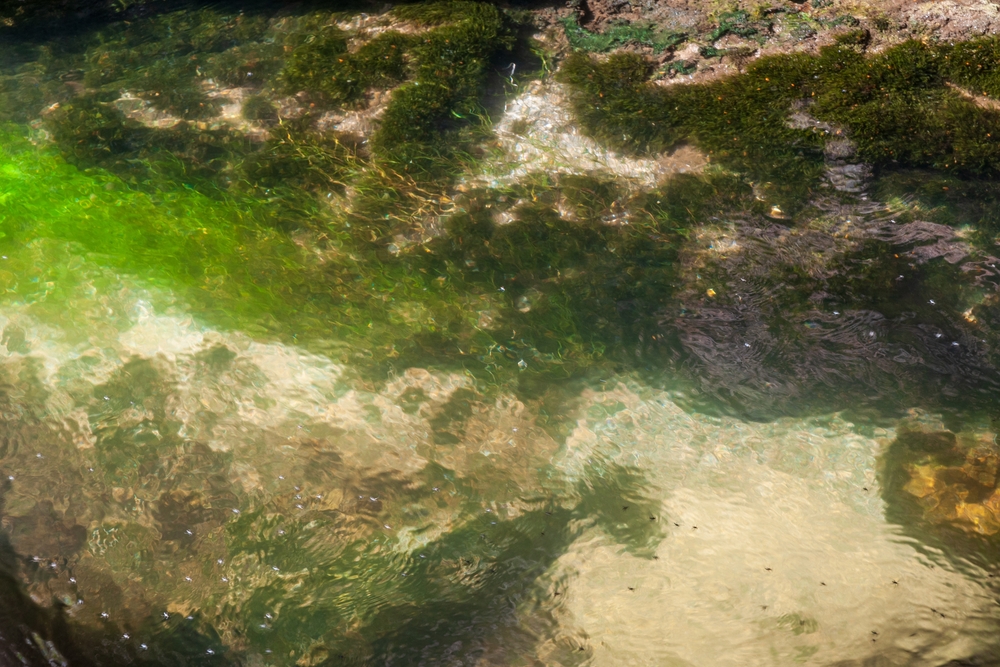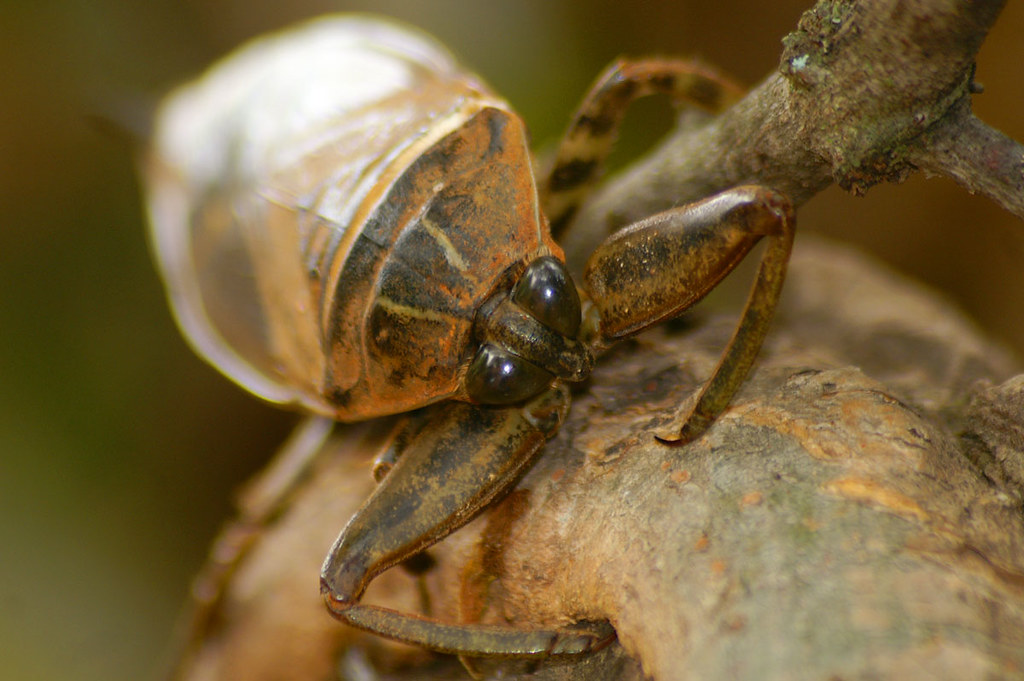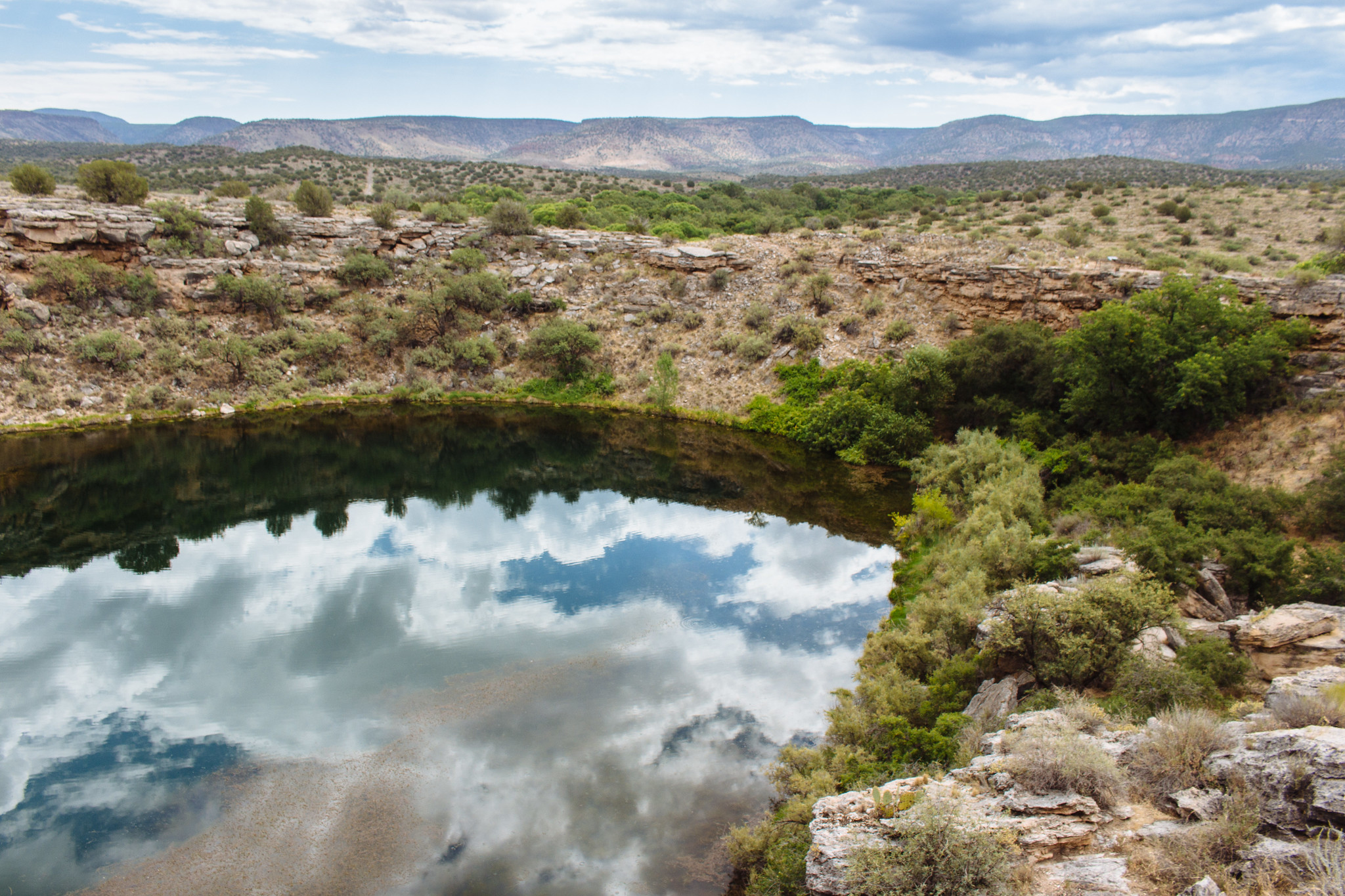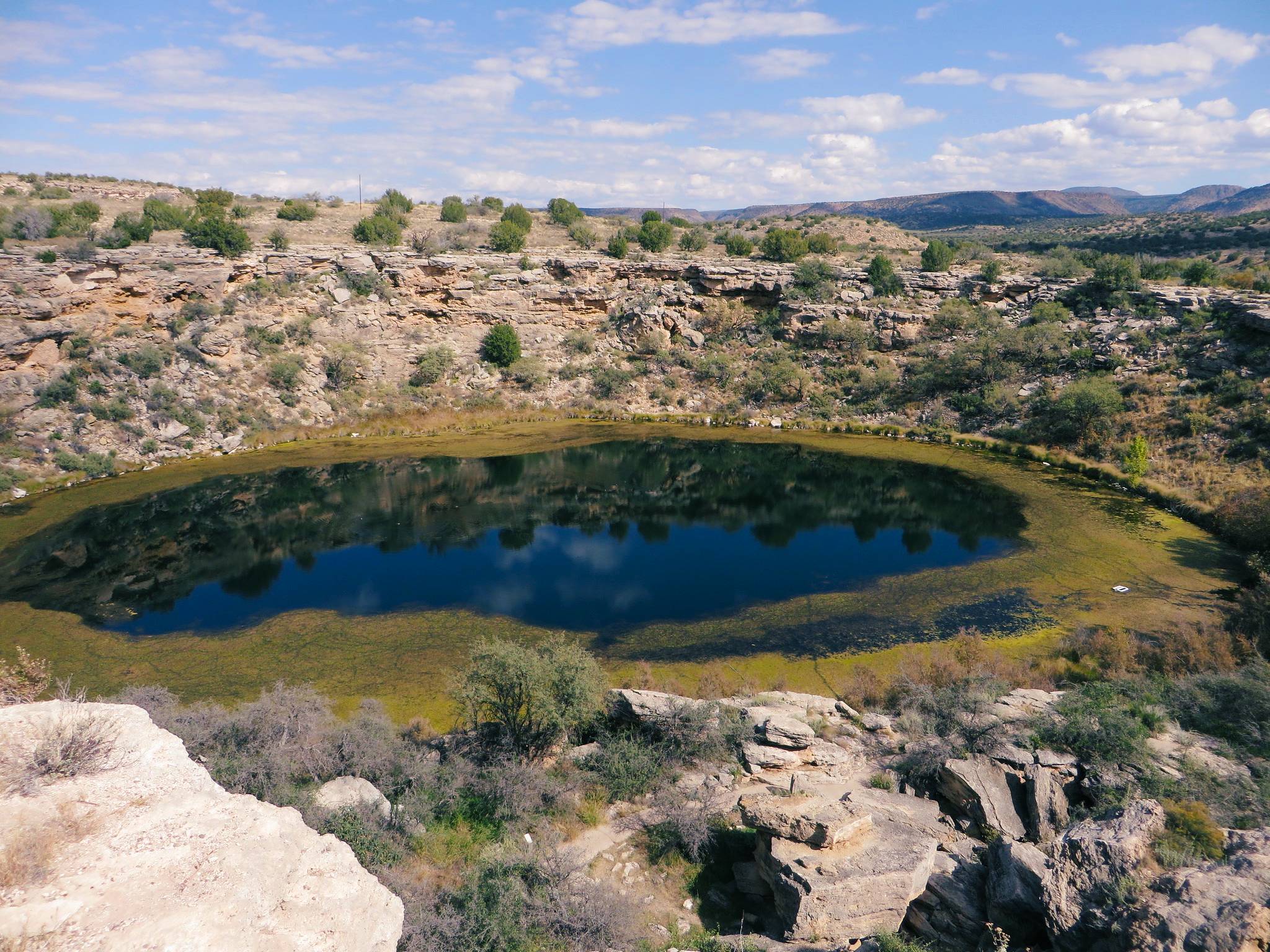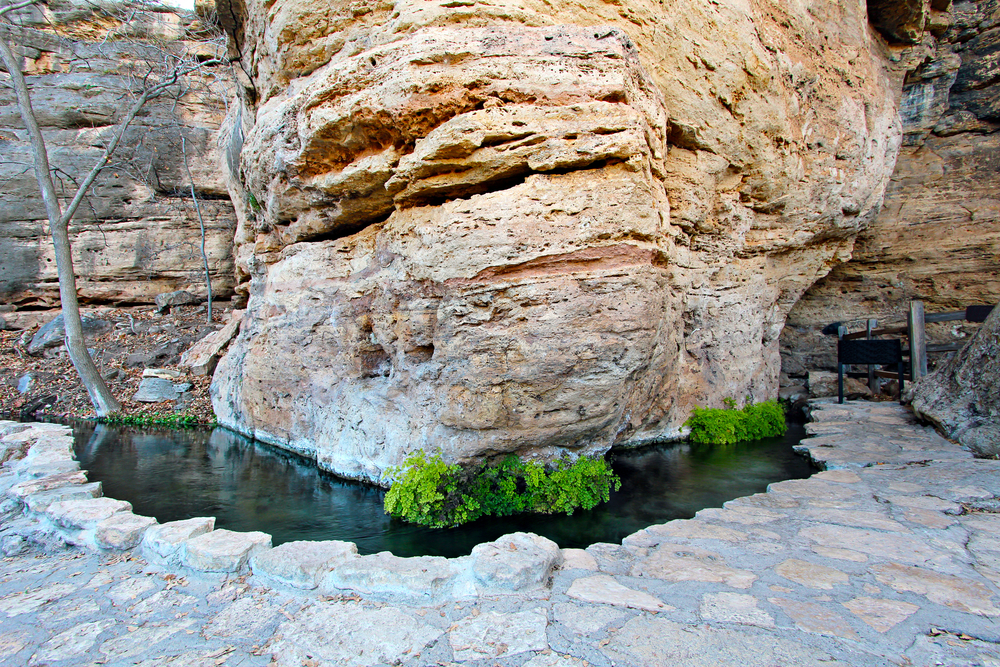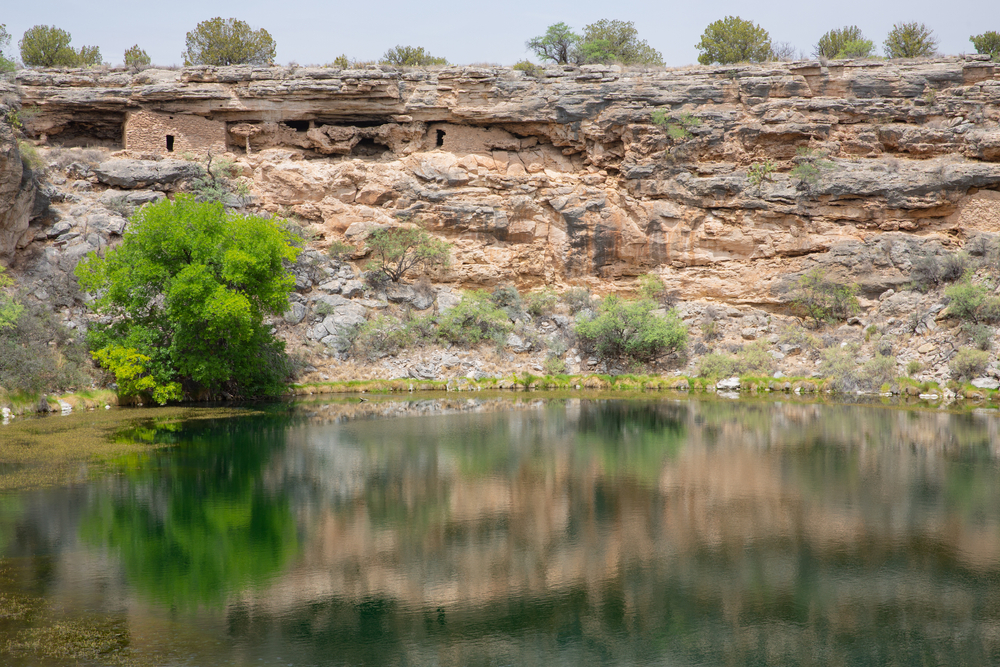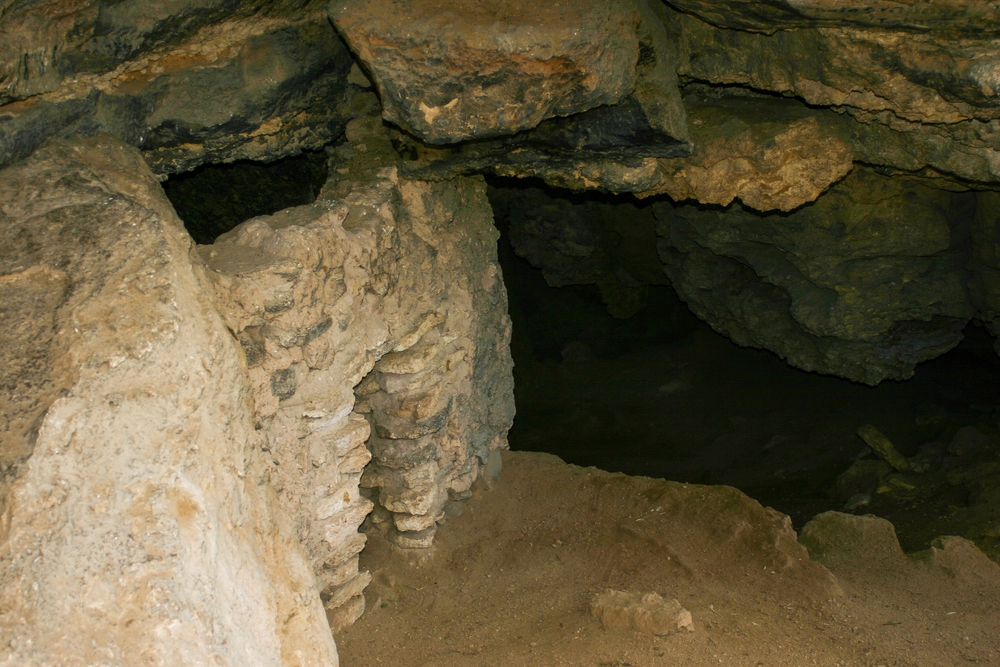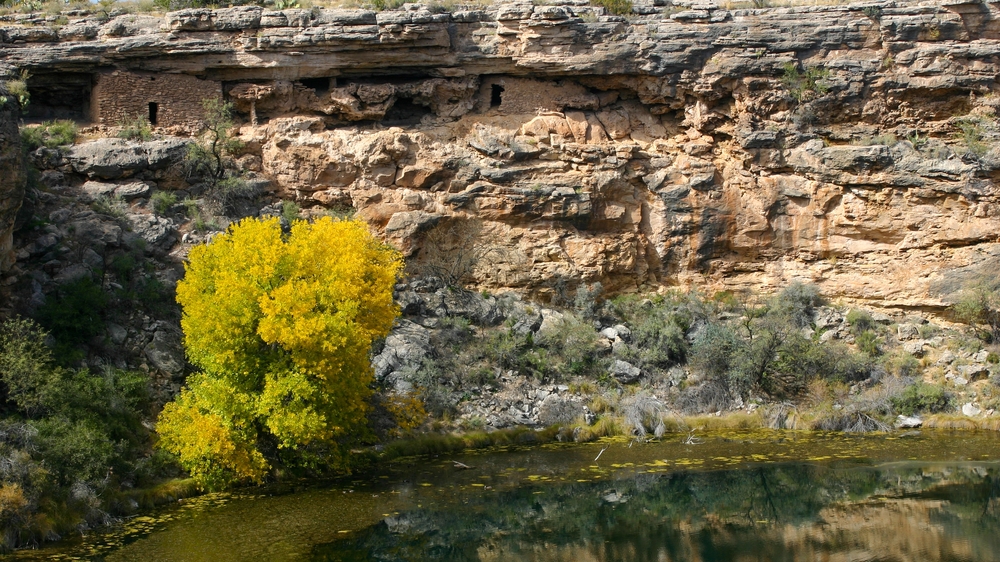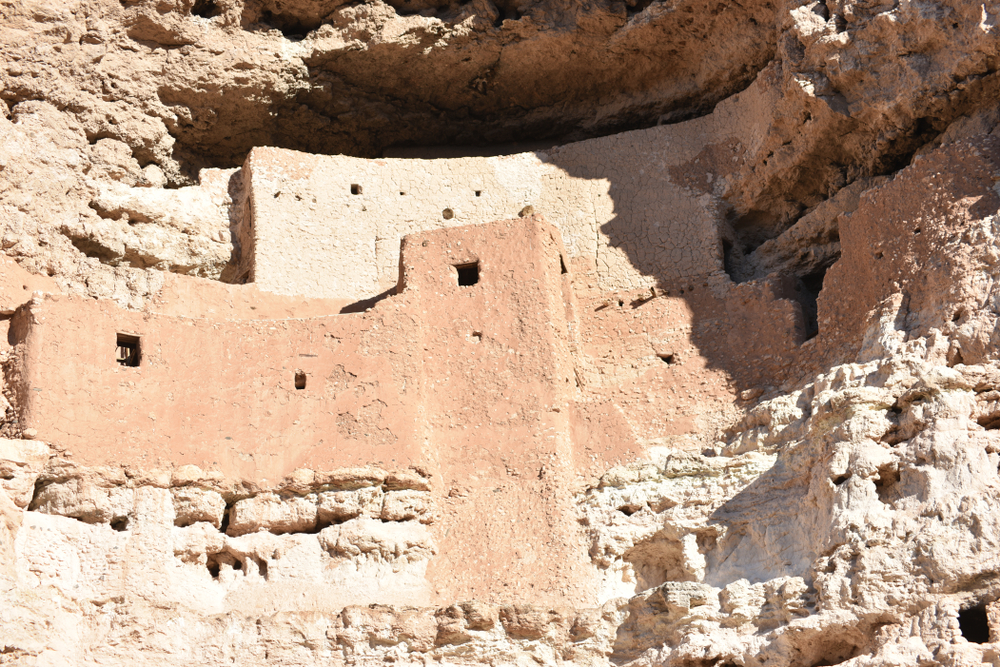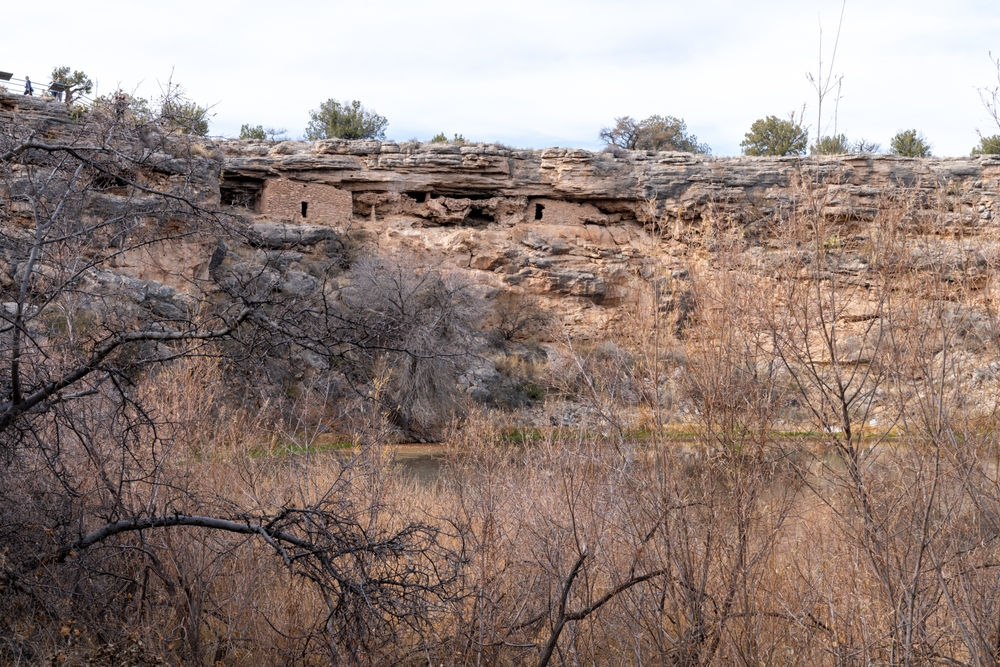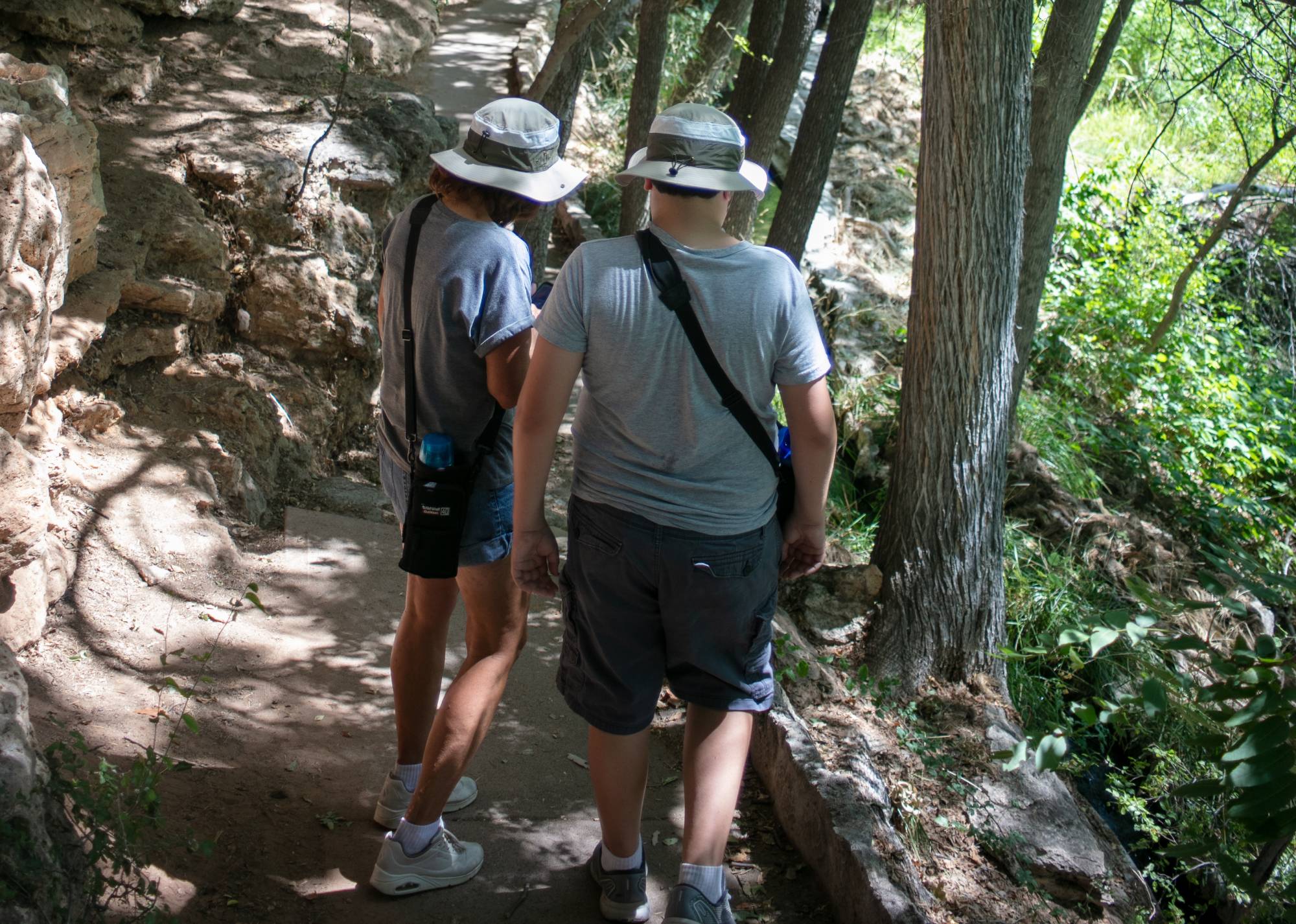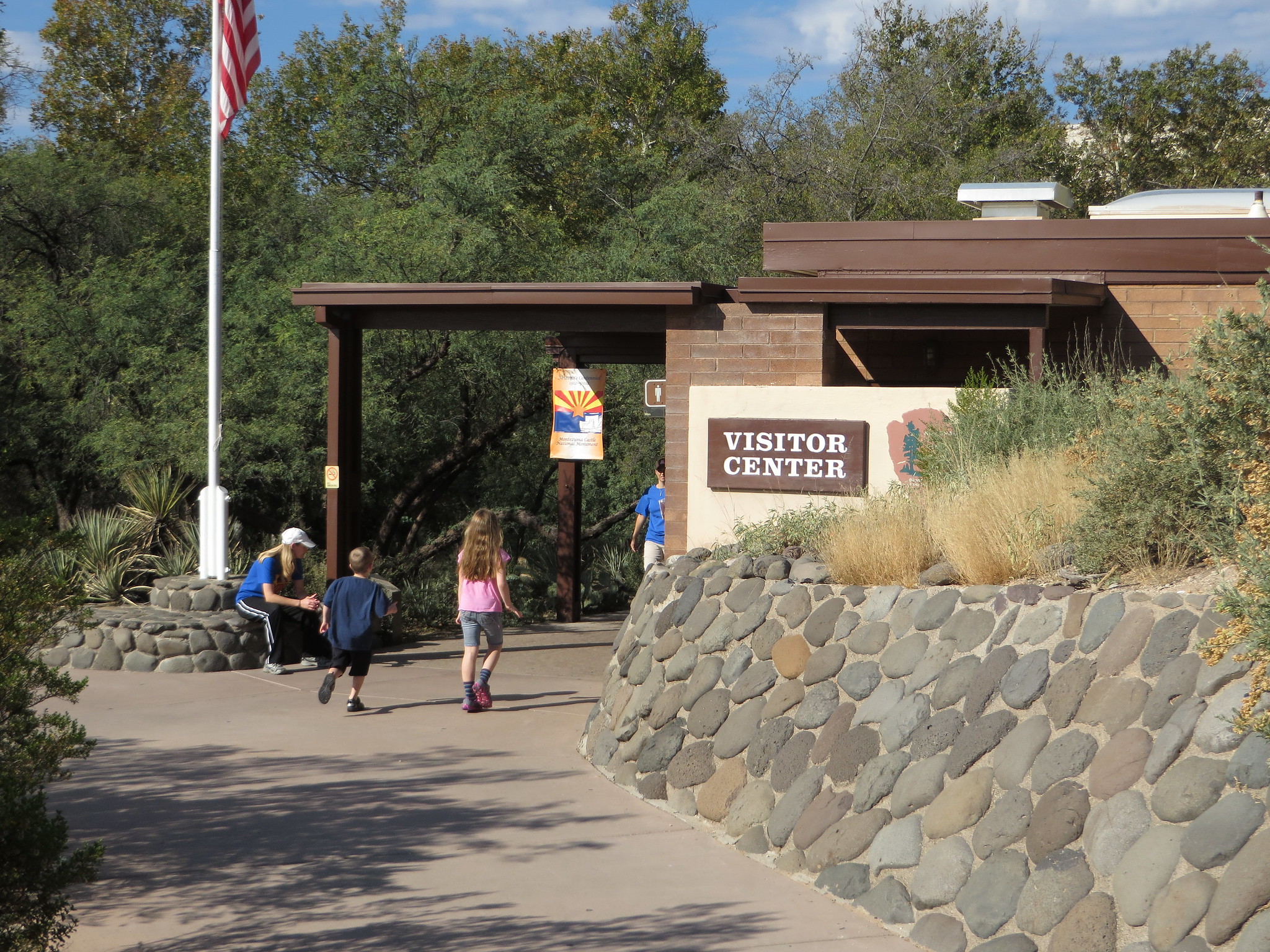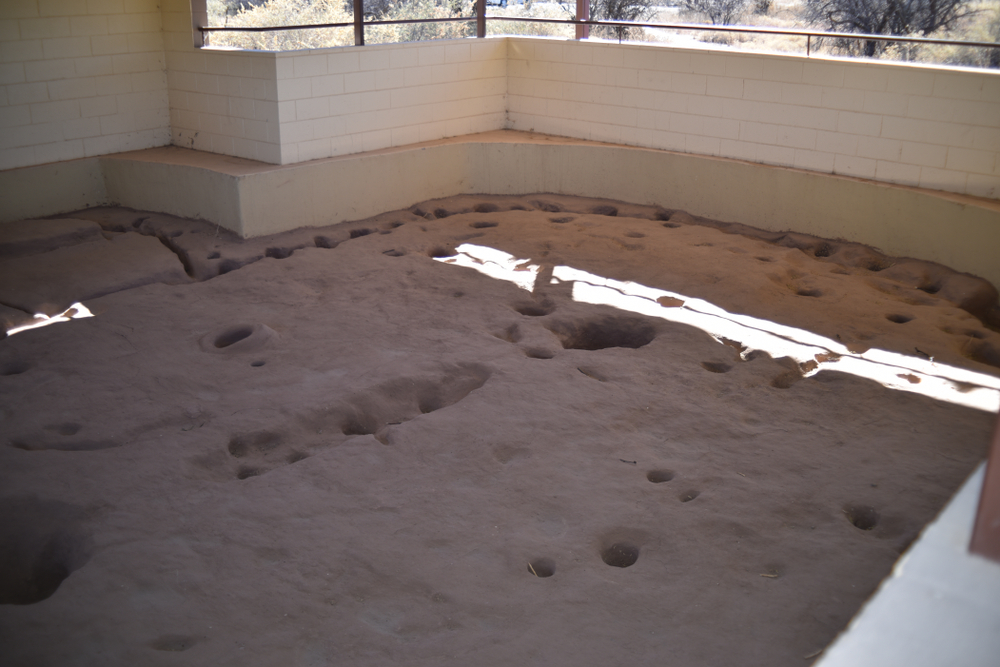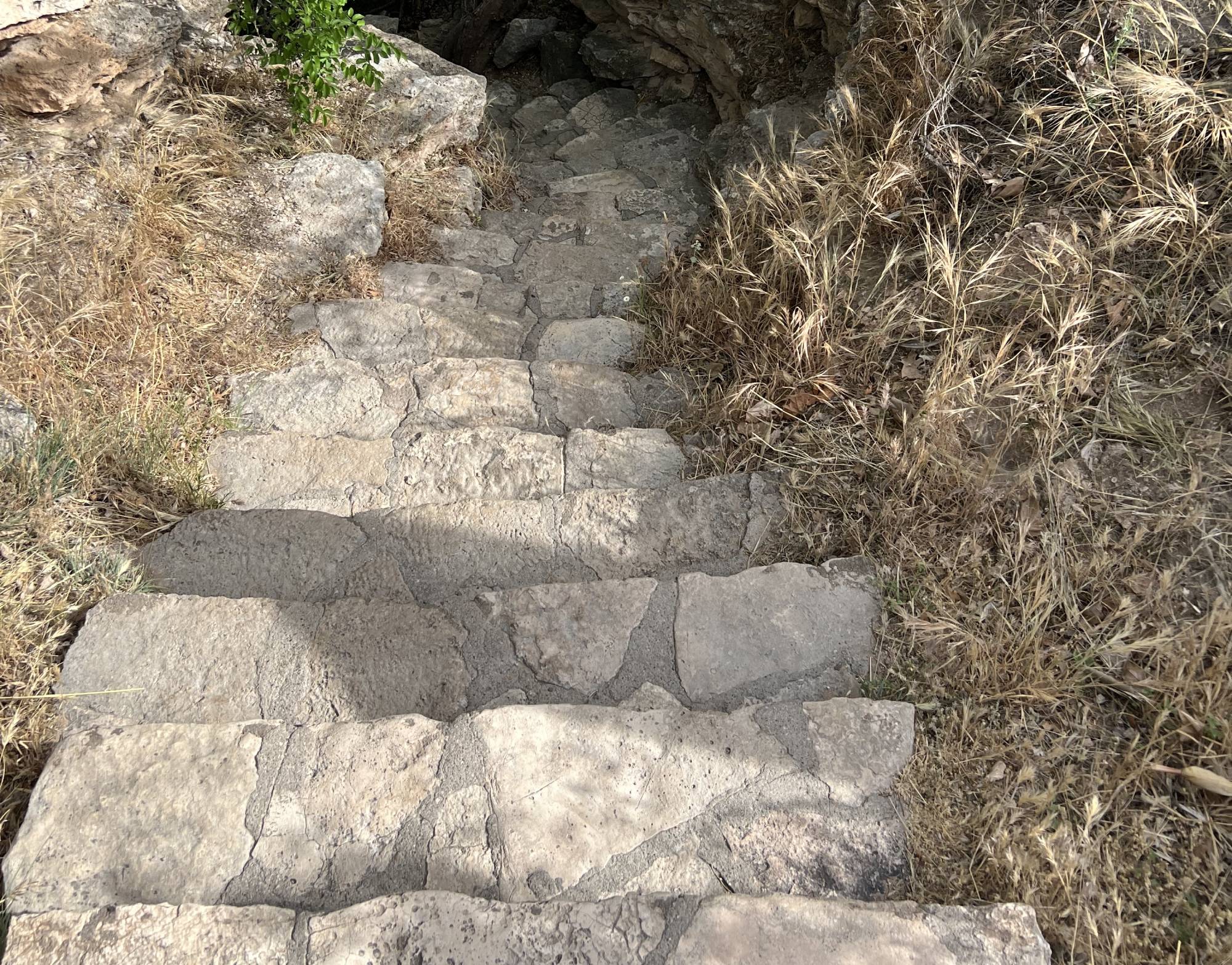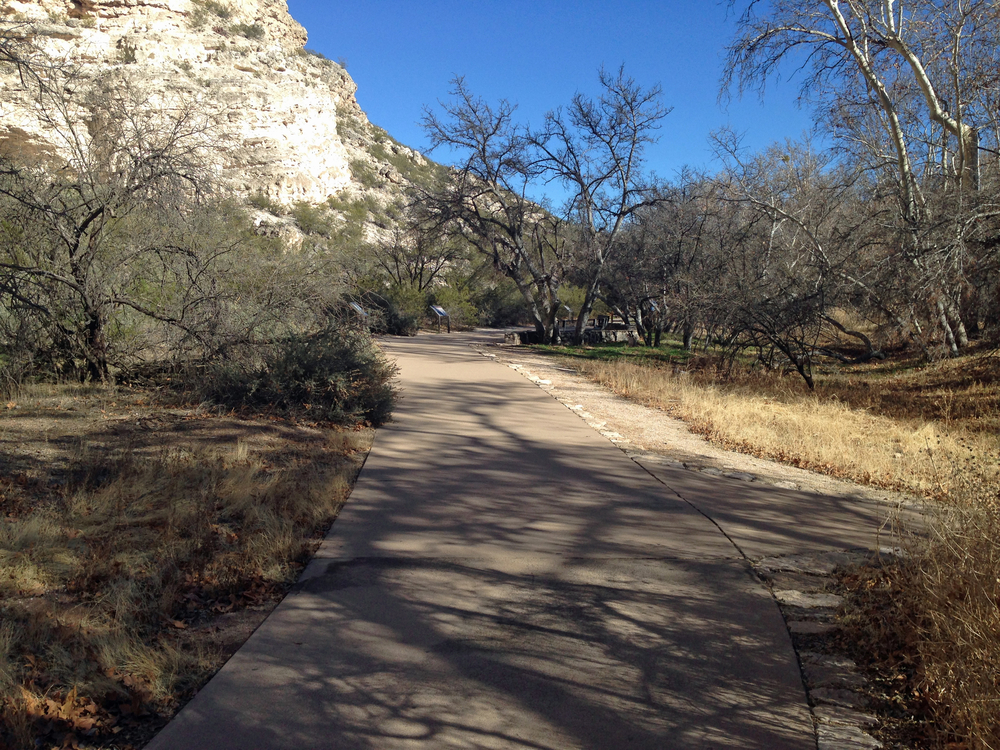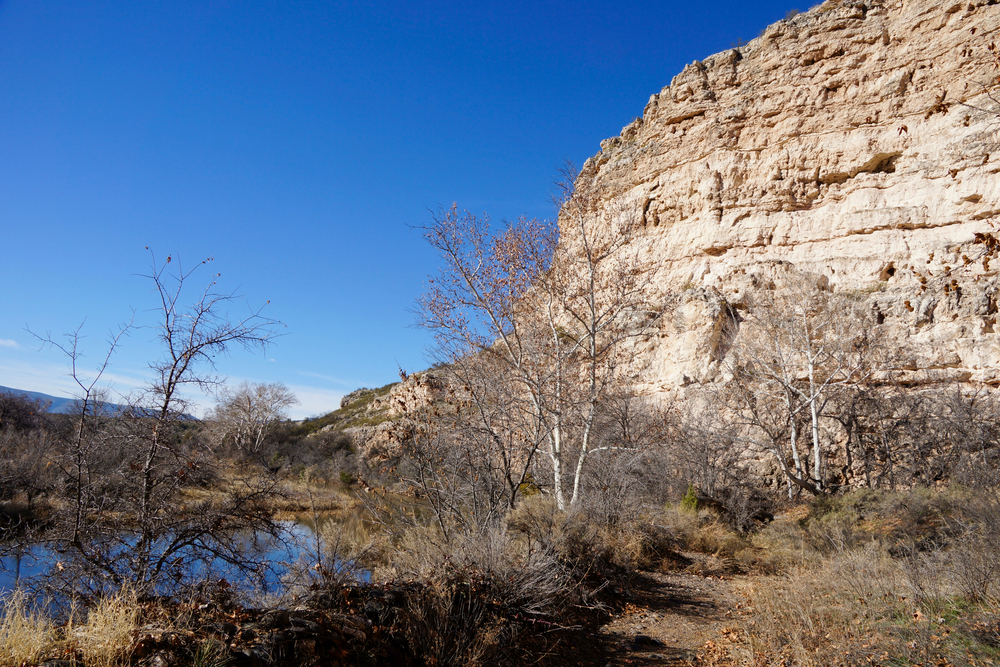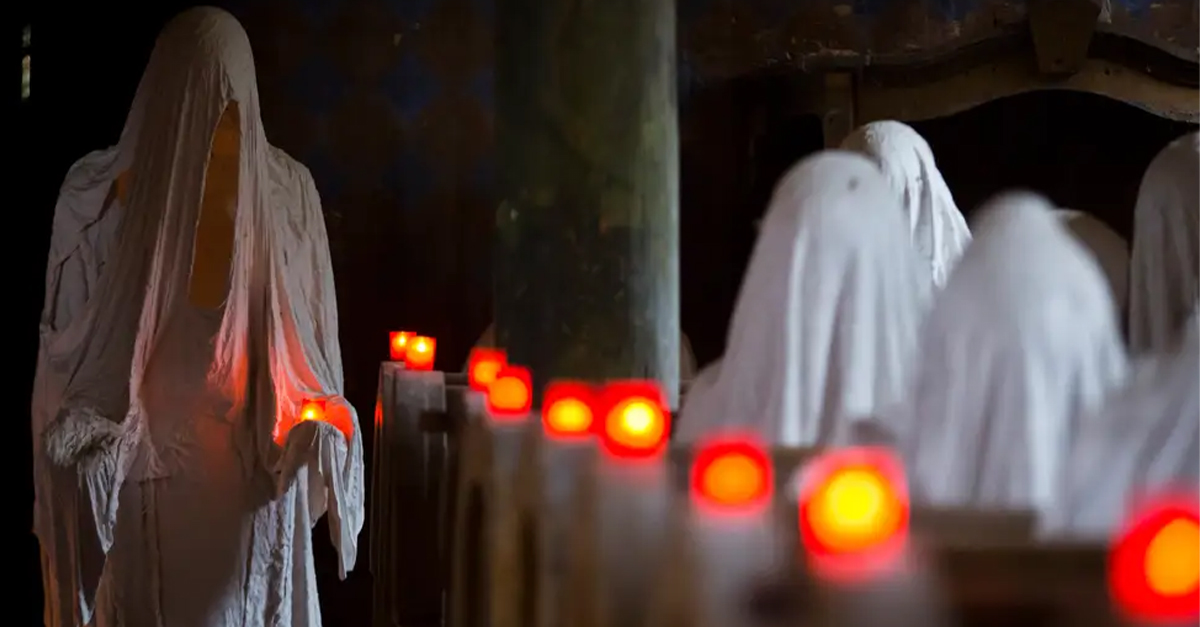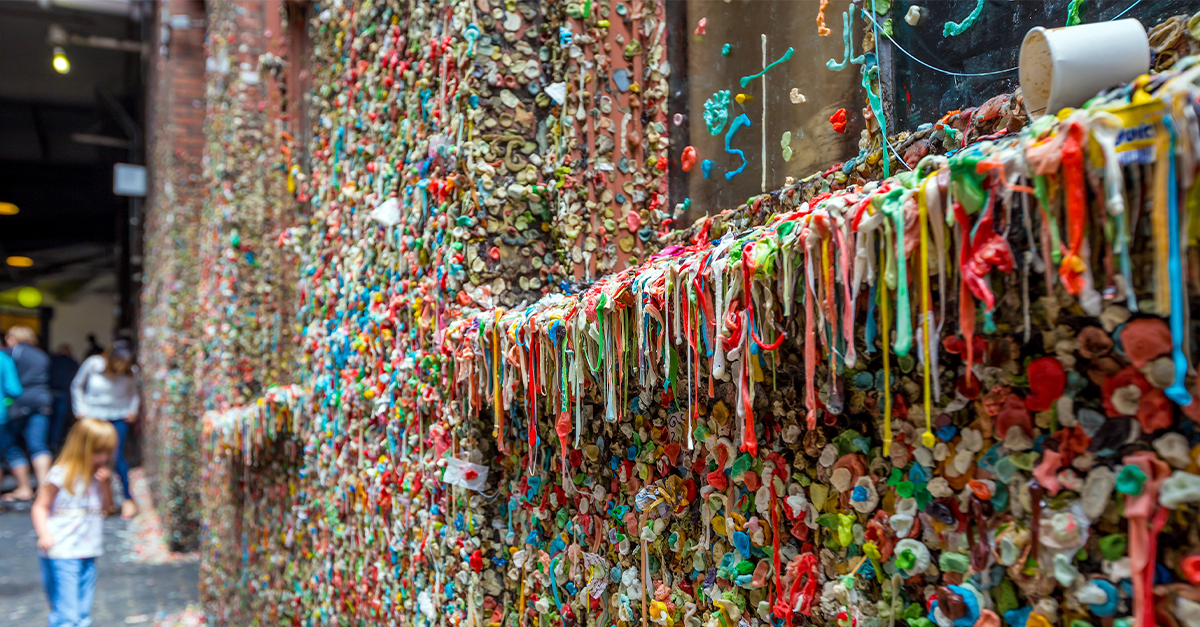Montezuma Well
Montezuma Well is a surprising desert oasis hidden in the heart of Arizona. Formed by a massive sinkhole and fed by an underground spring, it’s surrounded by striking desert scenery and ancient cliffside ruins.
Often missed by the crowds, this hidden gem is the kind of place that makes you feel like you’ve stumbled onto a secret...
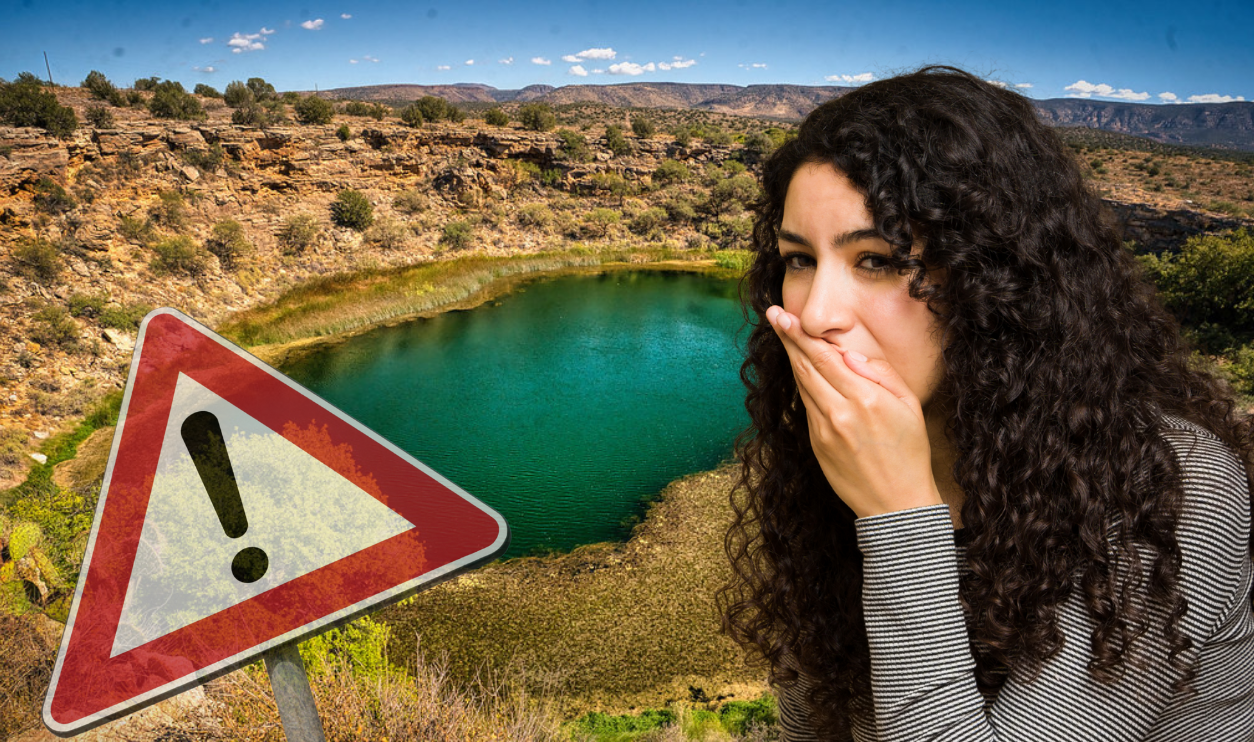
What is it?
Montezuma Well is a natural limestone sinkhole near the town of Lake Montezuma in Arizona.
It’s a large, circular sinkhole filled with blue-green water and surrounded by desert rocks, ancient ruins, and lush green foliage.
Where is it?
It’s located at Montezuma's Castle National Monument, and lies alongside Wet Beaver Creek in the Verde Valley.
Tourists enjoy the stunning castle grounds while they visit the well.
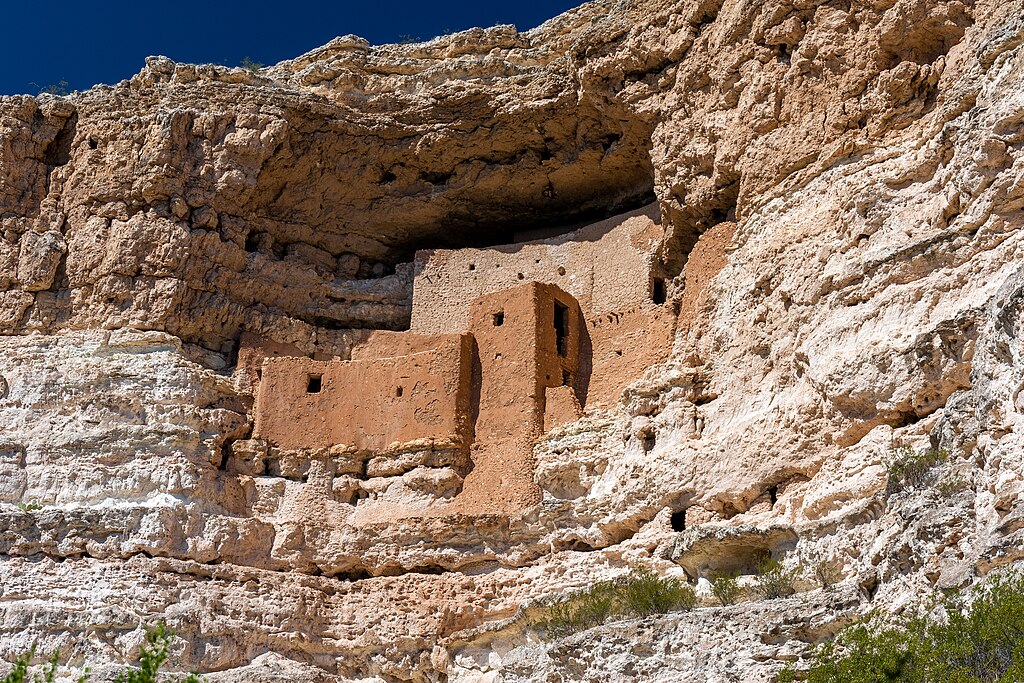 Xander Ashburn, CC BY 2.0, Wikimedia Commons
Xander Ashburn, CC BY 2.0, Wikimedia Commons
How big is it?
The “well” spans an impressive 386 feet across and plunges 55 feet deep—big enough to feel like its own little world hidden into the desert.
How much water does it hold?
The sinkhole regularly holds about 15 million gallons of water. It contains a near-constant volume of spring water even in times of severe drought.
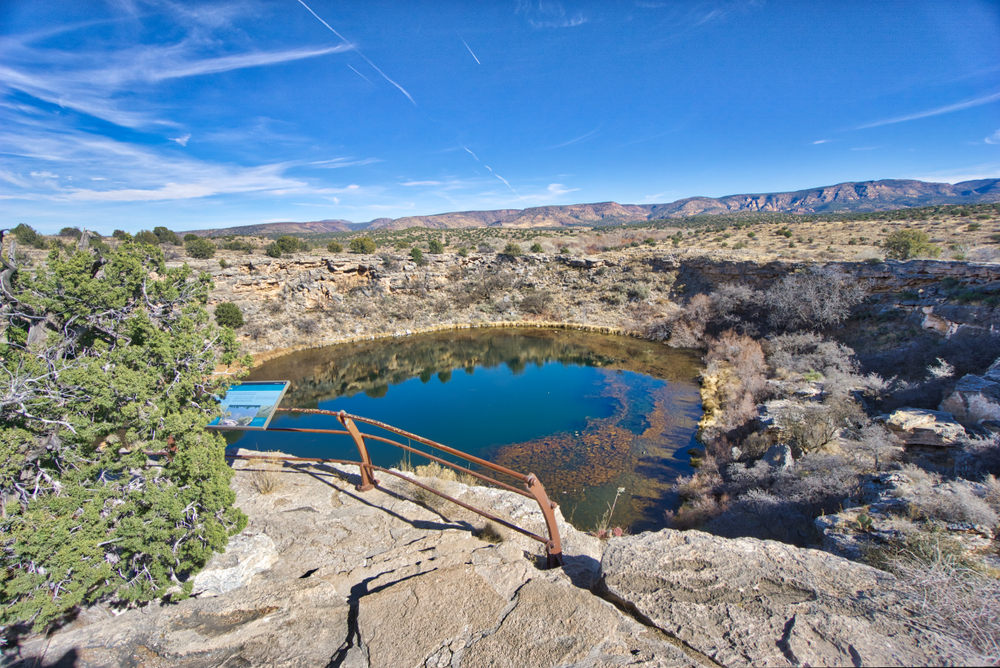 Exploring and Living, Shutterstock
Exploring and Living, Shutterstock
How much water flows through the sinkhole every day?
Each day, 1,500,000 US gallons (5,700,000 L) of water emerge from an underground spring, filling the sinkhole with beautiful blue water.
The water may look inviting, but it’s more dangerous than you’d think.
What is the water like?
The water is highly carbonated and contains high levels of arsenic, as well as calcium and other chemicals.
This combination prevents fish from living within the well, but that doesn’t mean there’s nothing living there.
Can it support wildlife?
Montezuma Well is home to at least five species found nowhere else on Earth—more than any other spring in the Southwest. From a tiny springsnail to a unique leech and even a water scorpion, this hidden oasis is a hotspot of rare, desert-adapted life.
What is a Diatom?
Diatoms are photosynthesizing algae with intricate silicate cell walls. Scientists think the three diatoms found within the Well may have appeared around 8,000 years ago.
What is The Montezuma Well Springsnail?
The Montezuma Well springsnail is one of the smallest wildlife species in Arizona. They grow to a length of 2 to 3 mm—smaller than a sesame seed.
These tiny freshwater mollusks are found nowhere else in the world. They thrive on the submerged rocks and sticks in the well’s outflow called the “swallet”.
What is a water scorpion?
Water scorpions lurk in the weed beds along the shore of the Well, slipping into open water at night to hunt. With a needle-like beak, they pierce their prey and feed on the fluids inside—nature’s little predator in action.
The Well may be a safe haven for these strange creatures, but not everything that enters its waters survives.
Is the water safe for humans?
A study done at Northern Arizona University found that the well had “levels of arsenic around 100 parts per billion (ppb), twice the levels allowed in United States drinking water.”
Therefore, it is not safe to drink.
How much arsenic is allowed in US water?
The US apparently has the most lenient standard in the world, “at five times the 10 ppb level recommended by the World Health Organization.”
But why is this a problem?
What does arsenic do to humans?
The federal Centers for Disease Control report that at high levels, arsenic can damage the nerves, stomach and intestines, and skin. Breathing high levels can lead to sore throat and irritated lungs.
Lower levels of exposure can cause nausea, vomiting, and diarrhea, and more.
How warm is the water?
Thanks to its underground source, the water in Montezuma Well stays a steady 76°F (25°C) year-round.
It might look like the perfect place for a refreshing dip—but don’t let the inviting water fool you. Swimming isn’t allowed, and the authorities definitely prefer to keep it that way.
Can you swim in the well?
It is advised that visitors stay out of the well completely. Not only is the water unsafe to consume (even accidentally), it is filled with leaches and creatures that you’d want to avoid.
Where does overflow water go?
Overflow water exits through a long, narrow cave into an ancient canal system that trickles through the desert surroundings, adding to the beautiful landscape in the middle of the Arizona desert.
When was it created?
The exact age of Montezuma Well isn’t known, but it's estimated to be around 5.5 million years old. That kind of deep history adds even more mystery to the ancient ruins scattered around its rim.
Who discovered it?
Thousands of years ago, ancient peoples—the Sinagua—chose the surrounding area as their home, specifically close to the well.
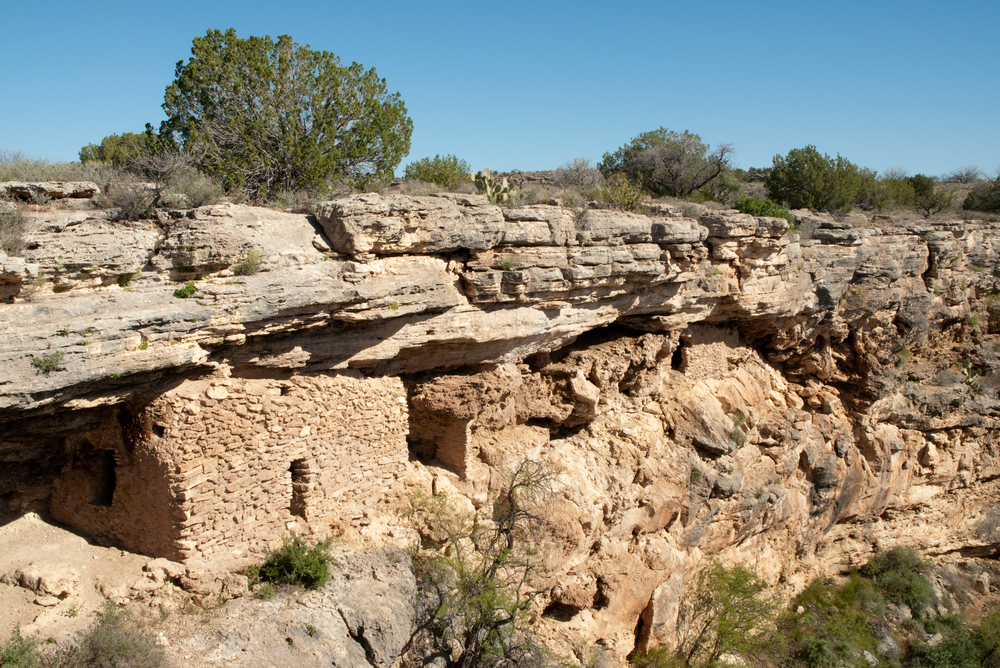 Jeffrey M. Frank, Shutterstock
Jeffrey M. Frank, Shutterstock
What did they live in?
The Sinagua people built several one-room dwellings, as well as a much larger one, known today as the Montezuma Castle—which has 55 rooms.
What were the dwellings made from?
Their dwellings were made primarily of poles, sticks and mud. They were built into the hillsides and among the rock formations.
Most of their dwellings remain intact over a thousand years later.
Can visitors see the ruins?
Along the Montezuma Trail, you’ll find several ancient ruins still standing, many built right into the hillside near the Well. For those craving a bit more adventure, the best views are just a short detour off the trail, offering a glimpse of history in a more secluded setting.
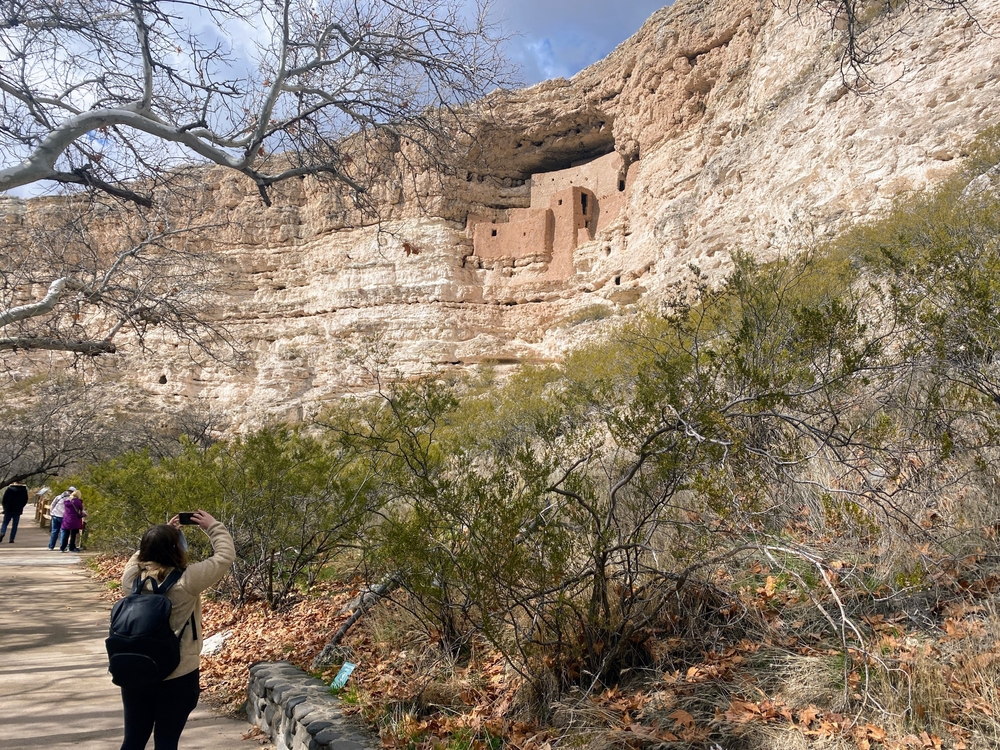 christopher babcock, Shutterstock
christopher babcock, Shutterstock
Who maintains the Montezuma Well?
The National Park Service has done an excellent job of preserving the areas original look and feel. Visitors can see the canal, enjoy picnic areas, and a historic back ranch house at the well.
How do visitors get around the grounds?
The National Park Service have created easy, cemented walking trails for visitors to follow as they casually explore the area.
Shaded forest areas along the trail offer relief from the hot Arizona elements.
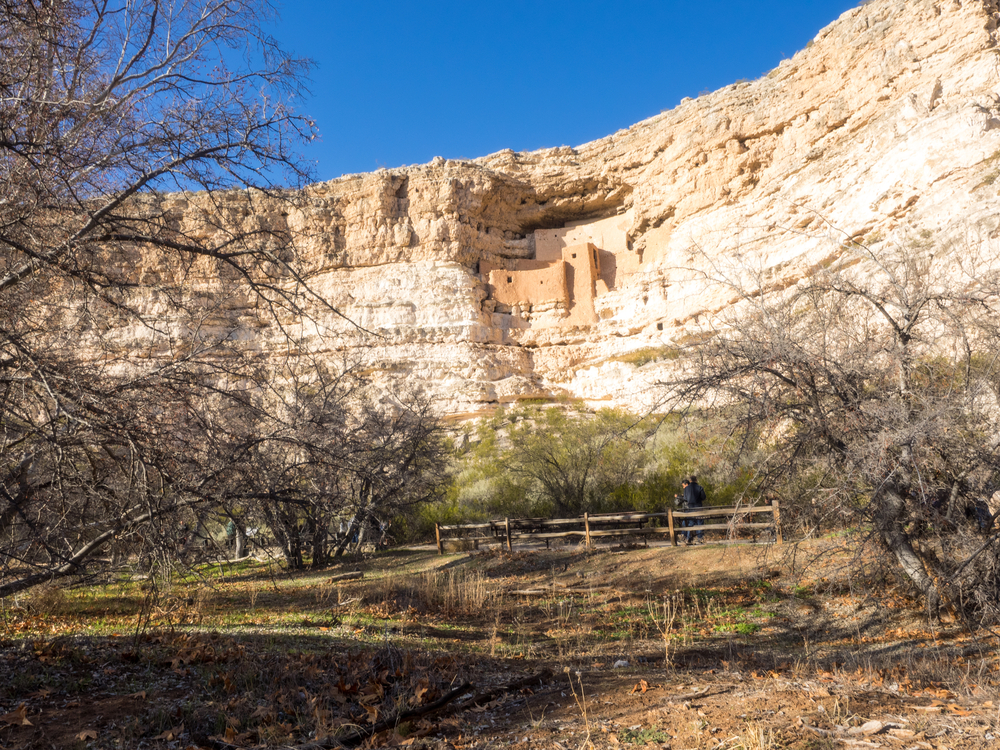 Mariusz S. Jurgielewicz, Shutterstock
Mariusz S. Jurgielewicz, Shutterstock
How long is the trail?
The self-guided hike to Montezuma Well’s main lookout is just 500 yards from the parking lot, making it an easy stroll. Many visitors say you can reach the well itself in less than a mile.
But if you're up for more, the trail doesn’t end there—there’s plenty more to discover.
What else can you see along the trail?
There is also a pit house you can see near Montezuma Well. It is believed that the Hohokam people lived here around 1050 AD—after the Sinagua.
Along with the pit house, you’ll see more ruins the further you walk.
Are there more trails?
Shortly after the main attraction—the “Well”—you will find trails that continue on into the desert. One trail will bring you to a large rock staircase that will lead you down to get up-close-and-personal with some of the ruins.
What sits above the well?
For those wanting to explore further, another trail takes you above the well, where you’ll find ruins perched on top of the hillside, offering a unique perspective of the stunning Arizona landscape below.c
Where else will the trails take you?
You will find another side trail which will take you down to the water outlet. It is lined with stunning rock formations, various forest foliage, and rocky steps.
It is a nice trail along the irrigation ditch and if you look further out you can see Beaver Creek.
After the water outlet, you’ll follow a trail that leads back to the main ranger station.
What do tourists think of the Montezuma Well?
Toursist reviews rave about how “unexpectedly beautiful” the Montezuma Well actually is. The sinkhole is apparently much larger than most people expect, and the trails are easy and accessible to most people.
The trail can be short or long, depending on where you want to go, and the park is carefully managed.
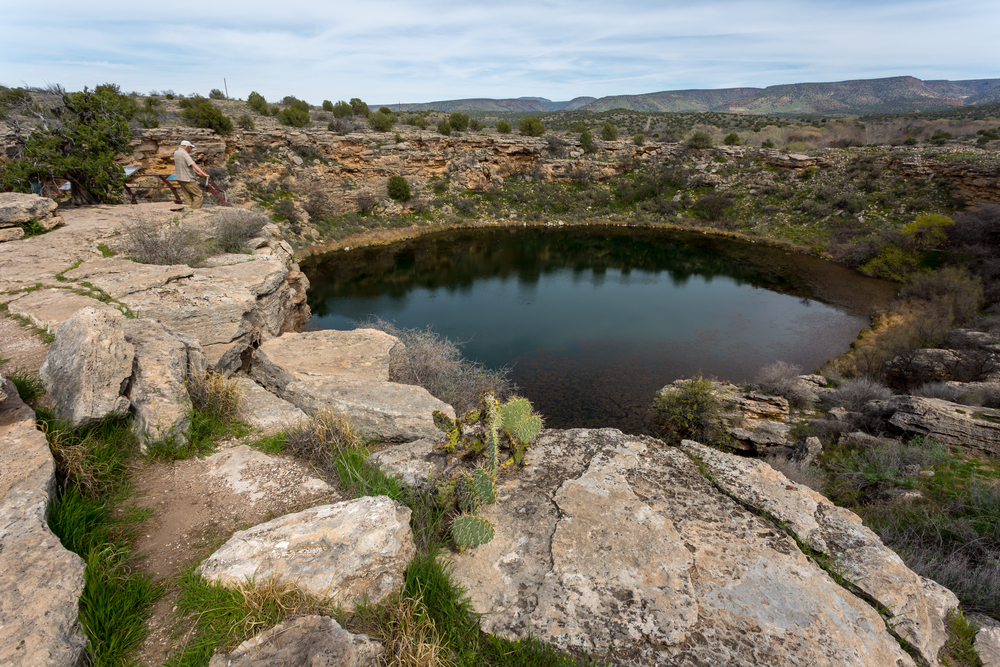 Jonathan Manjeot, Shutterstock
Jonathan Manjeot, Shutterstock
Final Thoughts
If you get a chance to visit the Arizona desert, adding the Montezuma Well (as well as the Montezuma Castle) to your bucket list is highly suggested.
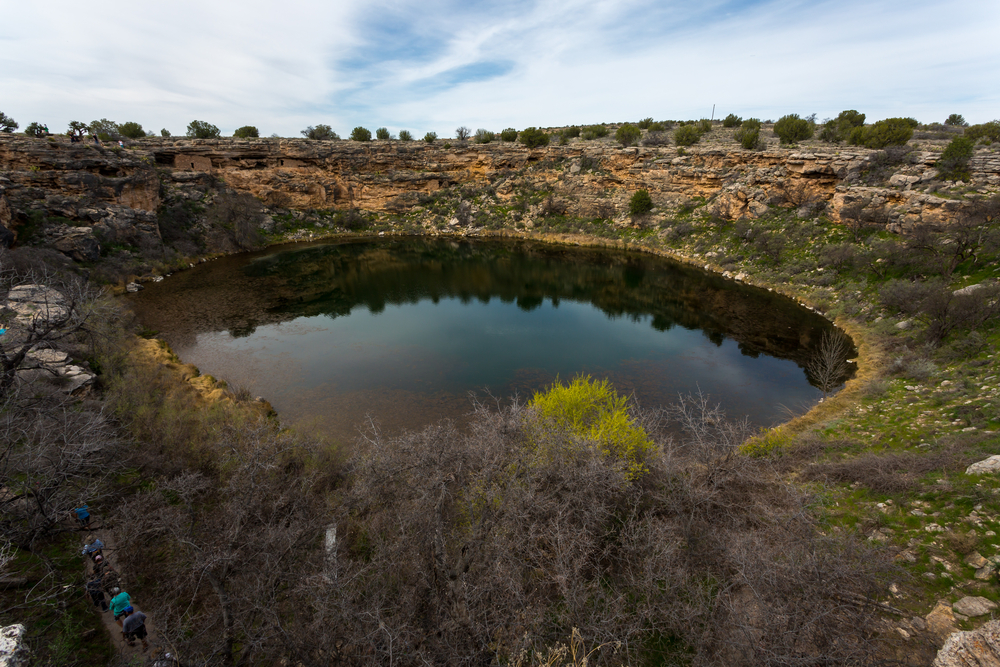 Jonathan Manjeot, Shutterstock
Jonathan Manjeot, Shutterstock

